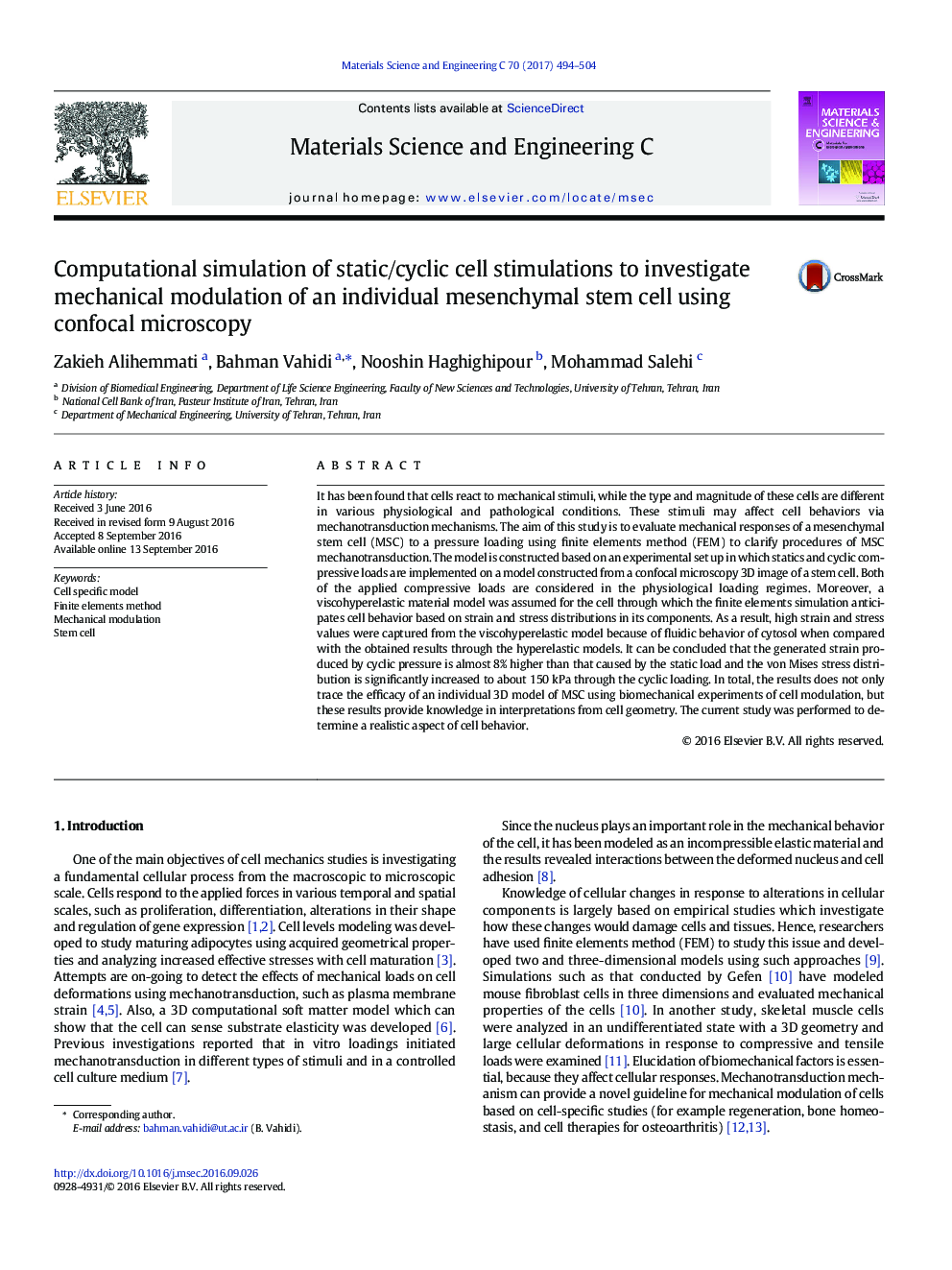| Article ID | Journal | Published Year | Pages | File Type |
|---|---|---|---|---|
| 6481392 | Materials Science and Engineering: C | 2017 | 11 Pages |
•The mesenchymal stem cell was used in the simulation because it is an attractive tissue engineering source for cell therapies.•The simulation was done using 3- dimensional images through finite elements method.•Atomic force microscopy was used to determine mechanical properties of stem cells.•Comparison between effects of static and compressive loadings on cell mechanical modulation is a major objective of the presented work.
It has been found that cells react to mechanical stimuli, while the type and magnitude of these cells are different in various physiological and pathological conditions. These stimuli may affect cell behaviors via mechanotransduction mechanisms. The aim of this study is to evaluate mechanical responses of a mesenchymal stem cell (MSC) to a pressure loading using finite elements method (FEM) to clarify procedures of MSC mechanotransduction. The model is constructed based on an experimental set up in which statics and cyclic compressive loads are implemented on a model constructed from a confocal microscopy 3D image of a stem cell. Both of the applied compressive loads are considered in the physiological loading regimes. Moreover, a viscohyperelastic material model was assumed for the cell through which the finite elements simulation anticipates cell behavior based on strain and stress distributions in its components. As a result, high strain and stress values were captured from the viscohyperelastic model because of fluidic behavior of cytosol when compared with the obtained results through the hyperelastic models. It can be concluded that the generated strain produced by cyclic pressure is almost 8% higher than that caused by the static load and the von Mises stress distribution is significantly increased to about 150 kPa through the cyclic loading. In total, the results does not only trace the efficacy of an individual 3D model of MSC using biomechanical experiments of cell modulation, but these results provide knowledge in interpretations from cell geometry. The current study was performed to determine a realistic aspect of cell behavior.
Graphical abstractBased on confocal microscopy images and through finite elements analysis, we simulate mechanical behavior of the stem cell components (the cell membrane, cytoplasm and nucleus) under a compressive load. A major novelty of this investigation is the usage of viscohyperelastic behavior for the realistic stem cell geometry. High strain and stress values were captured from the viscohyperelastic model compared with the obtained results through the hyperelastic models.Figure optionsDownload full-size imageDownload high-quality image (114 K)Download as PowerPoint slide
